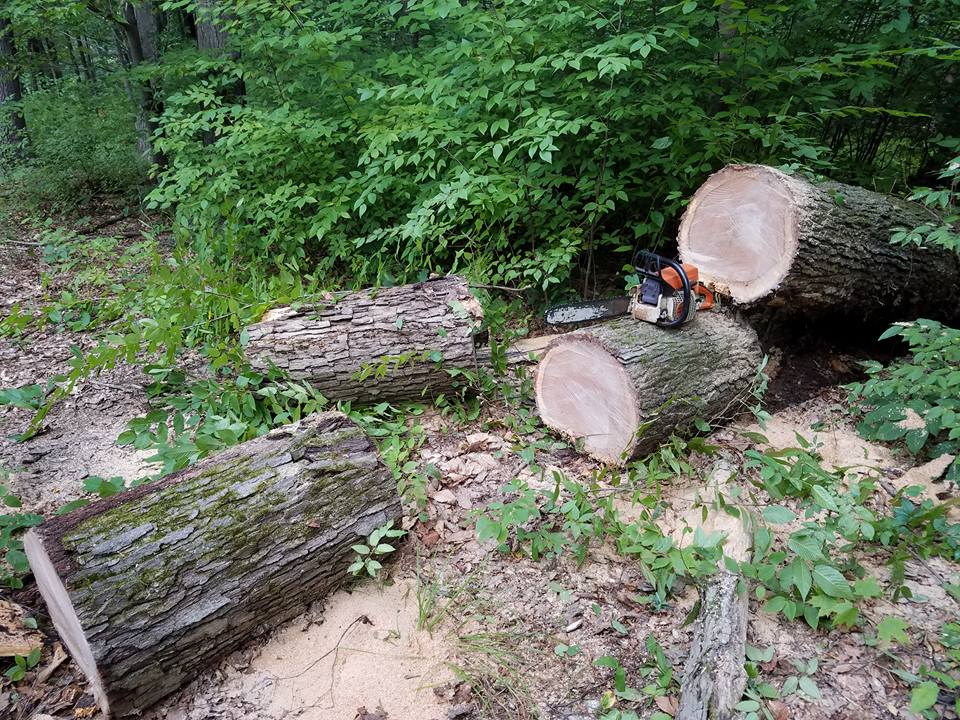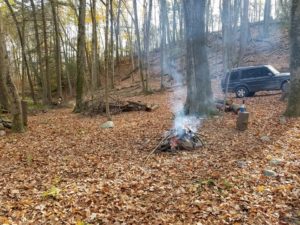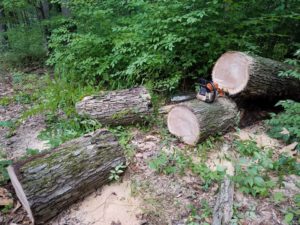When dealing with raw acreage and steep terrain, getting to certain areas can be difficult even on foot. The goal in a farmstead or homestead operation is to have driving access to as much of the property as possible in order to make the best use of the area. On seventeen plus acres with steep inclines, water to cross as well as old and new growth forest, creating access has been a slow and methodical process.
The first step is figuring out where you need to go and what the bet route will be. For most people with flat land a straight line or the fastest route is usually best. Here at the Homestead the terrain provides many obstacles such as steep inclines, cliff sides, uprooted trees and a winding creek in a steep valley. My route is rarely a straight line but rather is dedicated to the safest route for driving heavy equipment like trucks, tractors and whatever else I can get up there on.
When the route is determined, the cutting begins. I have a wide diversity of trees and brush so a variety of cutting tools are required. The absolute most important tool on any homestead is a chainsaw. I keep a 10″. 16″, 18″, & 24″ chainsaw ready to run with multiple sharp chains. Most of the primary cutting gets done with a 16″ or 18″ Echo or Stihl. I will typically spend more than an hour or 3/4 full tanks of fuel cutting trees either growing or fallen in the way of the driving path. Always carry your scrench (chainsaw tool), extra fuel and sharp chains or a sharpener. This will keep you from having to run back to the shop every time you dull a chain on a rock, barbed wire or any other chainsaw hidden kryptonite.
In order to get to a lot of targets with a chainsaw, some cutting using a long shears or weed whacker may be required. I particularly like a man weed cutter. It is important to make sure your cutting areas are well clear of small brush and obstacles in the way of your escape route before using a chainsaw. This will cut down on potential major injuries as well as maintenance on your chainsaw.
After the path is cleared of timber and brush, check for dangerous areas for unstable earth or rock slides. Once you believe it is safe enough to drive on, give it a test. I will normally drive slowly on the first couple passes to listen and feel for the ground moving below my vehicle. Often times after some use, some large rocks or roots may appear and need to be removed. Small holes may also appear and need to be filled in. When you are satisfied with that section of road continue to the next.
Some of the material I have gathered and use during the creation of my roads have included 35 tons of A3 Mod gravel, large rocks from around the property and a pile of used tires donated by the local auto parts store. Equally as important having machines to move materials like a tractor, front end loader, grading blades, plows and brush hogs make progress increasingly faster. For this, I use my 1952 Ford 8N tractor. A tractor like this is perfect for logging, grading, plowing in more confined spaces than a huge machine cab get into.
After nearly two and a half years, I now have full driving access to the back of the property and am currently working in both directions to create a perimeter road.





Leave a Reply